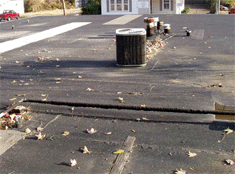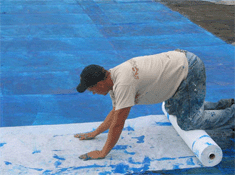Modified Bitumen
Why Consider a Modified Bitumen Roof Coating Application
A modified bitumen roof coating can extend the life of your roof by 10 or more years. Asphalt degradation is a growing concern. UV-rays oxidize the surface of the asphalt and produces a chalk-like residue. As plasticizers leach out of the asphalt, a modified bitumen or “mod bit” roof becomes brittle. Cracking and alligatoring inevitably follows, allowing water to penetrate the system causing blisters, and cracks. Seam failure inevitably follows causing leaks.A black modified bitumen roof absorbs a lot of the sun’s heat in the summer. High temperatures and UV-rays accelerate asphalt degradation. To make matters worse, the heatbuild up raises plenum temperatures thereby increasing cooling costs in the building.

Modified Bitumen Roof Restoration Process
Cleaning and Surface Preparation
The entire modified bitumen roof was thoroughly washed using a 3,000 psi pressure washer. A biodegradeable degreaser was used to ensure a clean surface. All seams, flashings and penetrations were carefully sealed to render the roof watertight.
Priming
Priming ensures a good adhesion between the roof surface and the elastomeric coating.
Top Coating
30 dry mils of elastomeric roof coating is applied on the entire modified bitumen roof in 2 coats.

A fabric reinforced system is recommended for this job since there are plenty of seams that required sealing. The entire roof was primed with PrimeLock and while the coating was still wet, 40″ wide PolyScrim roofing fabric was rolled out. PrimeLock was reapplied on the fabric to saturate it.
AFTER: A leak-free, seamless roofing membrane now covers the old, weathered modified bitumen roof. The cool roof coating reflects about 90% of the heat from the sun. The roof-top airconditioining units also operate more efficiently since the temperature intake air around the units have been noticeably reduced.
All these benefits for about half the cost of replacement. What more can you ask for?



